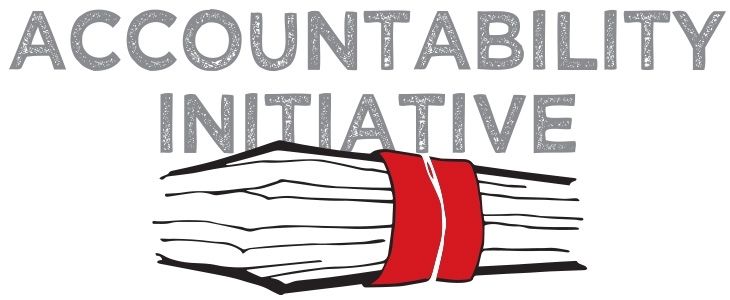
There’s no such thing as a local Plan
2 November 2010
Recently, in a move that has been rightly acknowledged as the first tangible step toward radically overhauling the Five-Year Plan process, the Planning Commission unveiled a new approach to the Twelfth Plan, aimed at making it an inclusive and participative process. To start, the commission has put together a strategy matrix for the approach paper and invited comments through its website. Efforts are also underway to “listen to and consult with citizens’” through civil society-led consultations across the country.
 Participatory planning is not a new phenomenon, and through its varied schemes, the Indian state regularly sends out invitations to citizens to participate in planning, monitoring and even auditing its activities. Moreover, the 73rd and 74th Amendments to the Constitution institutionalised participation by devolving powers to prepare plans to local governments and enabling direct people’s participation through gram and ward sabhas. Despite these invitations, meaningful participation is rare. A look at existing schemes shows us just where the problems are.
Participatory planning is not a new phenomenon, and through its varied schemes, the Indian state regularly sends out invitations to citizens to participate in planning, monitoring and even auditing its activities. Moreover, the 73rd and 74th Amendments to the Constitution institutionalised participation by devolving powers to prepare plans to local governments and enabling direct people’s participation through gram and ward sabhas. Despite these invitations, meaningful participation is rare. A look at existing schemes shows us just where the problems are.
First, information is scarce and awareness is low. Sarva Shiksha Abhiyan (SSA), for instance, calls for village education committees to make annual plans for implementing SSA. But study after study has highlighted that members remain unaware of their membership — and even those in the know, know little of their powers, responsibilities and financial entitlements. This despite the fact that SSA allocates funds in its budget for community training and awareness generation.
Unpredictable and delayed funding is a common problem and monies usually reach their destination well after they are needed. So even if a plan is made, chances are it will not be implemented.
Awareness-raising and providing meaningful, relevant information is not easy. It requires sustained, continuous local engagement, something that implementing officials — who are usually bogged down by oceans of paperwork — have neither the time nor the inclination to do. So committees are formed, because the guidelines require it; but that’s where it stops. More importantly, implementers don’t necessarily value participation. In a recent conversation with a block official in charge of SSA in Madhya Pradesh, he, while acknowledging the mandate for peoples’ plans, said plans are actually made at the block level because (to paraphrase) “we know the status of schools.” “I have’, he added, “up-to-date data.” Sharing this data with people and soliciting their participation was not on his agenda.
Information scarcity apart, the greatest hurdle to participation lies in the very design of the implementation architecture. Every time a scheme calls for participation, it also puts in guidelines that ironically create disincentives for meaningful participation. Funds arrive at the implementation level tied to very clear expenditure items and rigid norms. In SSA, for instance, although the village education committee is expected to plan, if it decides to spend more on teaching materials by using money given for painting walls, the rules won’t allow it. Why bother making a plan that takes into account local needs when there is no flexibility to make budget allocations accordingly?
If it’s not the rigidity of the funding norms, it’s conflicting rules that make planning impossible. In a recent case in Karnataka, a village plan — made under a World Bank-funded programme that provides untied grants to panchayats — for building dry latrines with covered pits suited for the water-scarce area was rejected. Instead, a concrete septic tank latrine was chosen, which required water that the village did not have, because the rules demanded it!
Tardy implementation adds to the problem. Unpredictable and delayed funding is a common problem and monies usually reach their destination well after they are needed. So even if a plan is made, chances are it will not be implemented. As part of an effort to mobilise village education committees under the SSA in rural Madhya Pradesh, for example, a committee made a plan to fix a leaky roof before the monsoon — but this couldn’t be implemented because funds didn’t arrive on time. The roof leaked through the monsoon and the parents stopped coming to meetings. Worse still, parents have no real means of redress, and local officials claimed no responsibility. Meaningful participation, at minimum, requires that the state fulfils some basic functions to deliver on plans. Lack of participation, in this case, is a symptom of state dysfunction.
The current architecture for planning complicates matters further. Participation can only be truly effective in a decentralised system; precisely for this reason, constitutionally, powers to make local plans have been devolved to panchayats and municipalities. But resources flow through sector-specific centrally-sponsored schemes (CSS) with their own parallel planning processes, resulting in multiple planning bodies and endless confusion on the ground. CSS also limits state discretion because a large pool of state resources goes toward contributing to their share of the CSS. State plans are thus tailored to central funding streams. De facto then, planning remains a centralised activity, one that by its very nature creates limited space for meaningful participation.
In soliciting participation through the website and consultations with citizens groups, the Planning Commission has taken an important step towards putting people back on the agenda. This could also be an opportunity to resolve critical institutional failures that have made meaningful participation so difficult. Perhaps what we need is a plan to strengthen people’s plans!
Yamini Aiyar is Director of the Accountability Initiative.
This article appeared on 01-11-2010 in the Indian Express.




